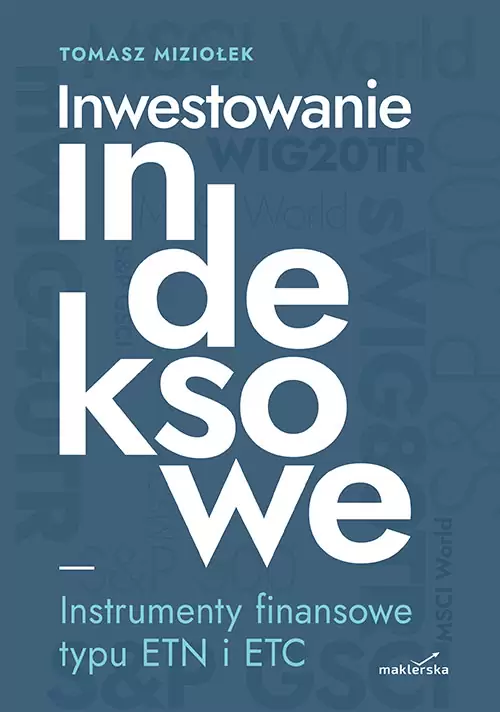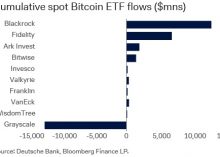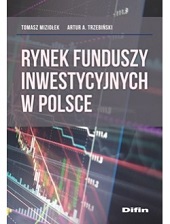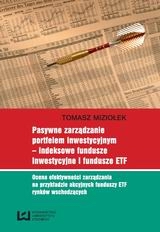Artykuł Francisa Grovesa poświęcony tym razem funduszom ETF dającym ekspozycję na rynki instrumentów o stałym dochodzie (fixed income ETFs).
Fixed Income ETFs – A Whole New Asset Class AT A Stroke?
It’s been said before that, as far as private investors are concerned, one of the great advantages that exchange traded funds bring is to give access to different asset classes beyond equities and mutual funds. And one of the greatest dangers is that self-investing investors will use ETFs to venture into unfamiliar assets almost without realising that they’ve strayed into alien territory.
The kinds of assets that usually instanced as quick-sands for the unwary are, firstly, leveraged or short ETFs and, secondly, those tracking commodity futures indices (sometimes known as ETCs). However, little is said about any dangers that might accompany a move into fixed income assets for the first time by means of ETFs. And yet, for investors moving into this asset from equities, fixed income is a strange beast that takes some time to get to know. Polish private investors may have grown confident in their use of equity ETFs and be unaware of the challenges posed by bond ETFs.The only reason that there have been no calls to warn the novice fixed income ETF investor is fixed income’s reputation for relative safety as an asset. Admittedly, this might mean that an investment in fixed income ETFs is unlikely to go horribly wrong but it seems insufficient reason for investors not to take the trouble to look ‘under the hood’ to see how they actually work.
In fact, learning about fixed income ETFs is a two stage process, involving, firstly, acquiring basic knowledge of how individual bonds work and, secondly, adding in some modifications that specifically relate to the workings of a bond ETF. The best introduction that I’ve found that combines both aspects of these funds is Russ Koesterich’s ‘The ETF Strategist’ (Published in the US by Portfolio in 2008). There are also introductions to fixed income basics available on the Internet, not least from ETF sponsors; a good test of whether or not you’re looking at one of the better ones is to check that definitions of ‘duration’ and ‘yield to maturity (YTM)’.
There are several ways in which fixed income ETFs modify the discipline of fixed income investing, making the ETFs subtly different from the kind of composite bond that you might expect them to be. The most important difference is that fixed income indices mostly rebalance on a monthly basis. Why is this significant? As with individual bonds, ETF sponsors and commentators refer to basic metrics such as (average) maturity, coupon, yield to maturity and modified duration. Experienced fixed income investors are used to making their analysis of the effect of financial news on the prices of individual bonds secure in the knowledge that term or lifespan of each bond and the coupon are both fixed. Bond prices respond to a limited number of factors such as changing inflation forecasts or warnings about credit ratings. However, in the case of fixed income ETFs, the basic measurements of the fund will change as a result of changes to the index constituents as well as all the usual price changing factors.
A second way in which fixed income ETFs present challenges to someone moving into the asset class from equities, is that at the ETF constituent level, the liquidity of the ETF is likely to be quite low (for example, many corporate bonds trade very infrequently) and will in any case be very difficult to check. This means that the liquidity of the ETF on the stock exchange where it is listed may be far higher than the underlying liquidity and that, as we saw in 2008, the bond indices can plunge erratically because trading in many individual bonds has almost come to a standstill. Indeed, it’s possible to imagine the bond indices following trading in the fixed income ETF shares, even though the ETF shareholders may well be paying a fee for the ‘privilege’ of tracking the index.
The third challenge for ETF investors is something of a sleeping dragon that commentators are only now voicing serious concerns about; bond indices depend upon the credit rating agencies to decide which bonds qualify for which indices but the idea that the ratings agencies are too slow to downgrade is gaining currency. It’s been suggested that the price of credit default swaps (CDS) that institutions use to insure against the risk of holding a bond may be a better, timelier indicator. The difficulty with this is the lack of transparency in the CDS market.
My fourth challenge facing ETF investors is a matter of market context rather than bond technicalities. Having stressed the vulnerability of ETF investors in moving out from equities to embrace other assets, the current sovereign debt crisis may make investors pause before they buy fixed income ETF shares right now. But there’s a potentially far more serious problem around the corner in the problems with the US government deficit. Not that there’s likely to be a really serious problem around Congress’s current reluctance to raise the US debt ceiling. The more serious issue is the inability of America’s politicians to agree on a solution to bring borrowing under control shows no signs of being overcome in the longer-term. A combination of the amount of US government bonds, or Treasuries, and the markets’ trust in them make them the equivalent of zero on the Celsius scale. If that trust is called into question, the results for bond markets would be chaotic – imagine a circus tent collapsing in mid-performance.
Although I’ve been using fixed income ETFs for a couple of years, I remain cautious about them and generally prefer to use unit trusts or OEICs for fixed income investments.
Holdings: iShares Global Inflation-Linked Bond ( IGIL:LN ), iShares Markit iBoxx Euro Corporate Bond ( IBCX:LN )
Francis Groves is a researcher and writer on investment topics, based near London, England. His most recent book, 'Exchange Traded Funds, A Concise Guide To ETFs’ was recently published by UK Publisher, Harriman House. This guide covers the essentials of investing with ETFs for financial advisers and serious private investors. Visit http://www.harriman-house.com/exchangetradedfunds to find out more.
Artykuł został przygotowany specjalnie dla serwisu www.etf.com.pl.






Wpis jeszcze nie ma komentarzy.